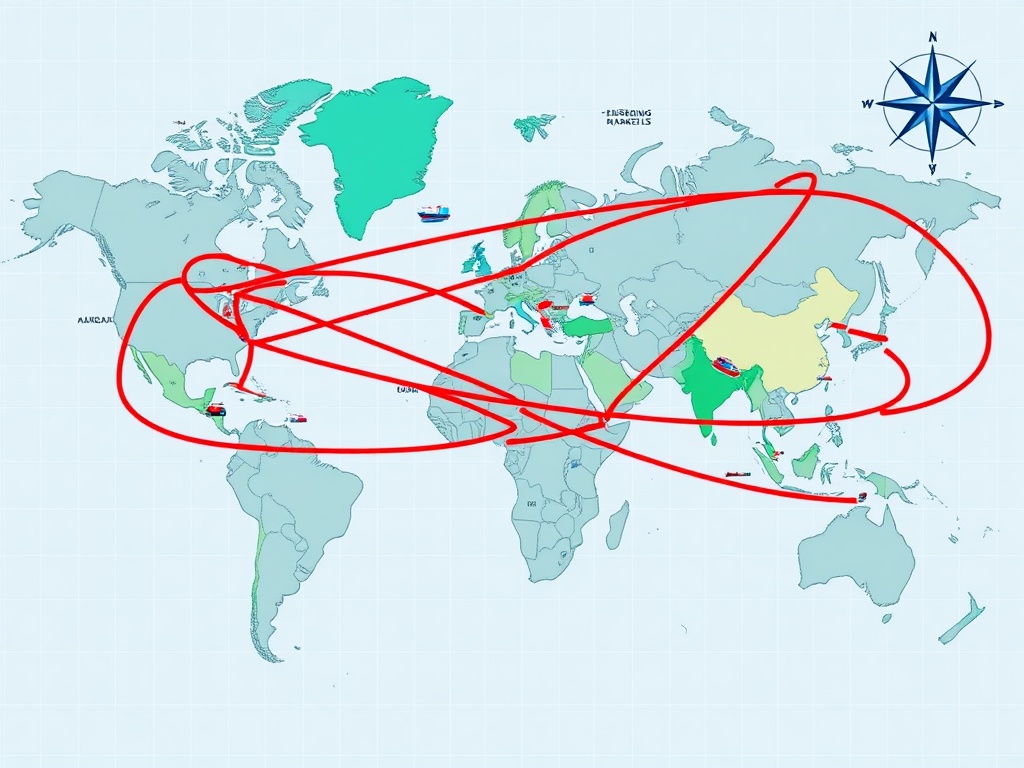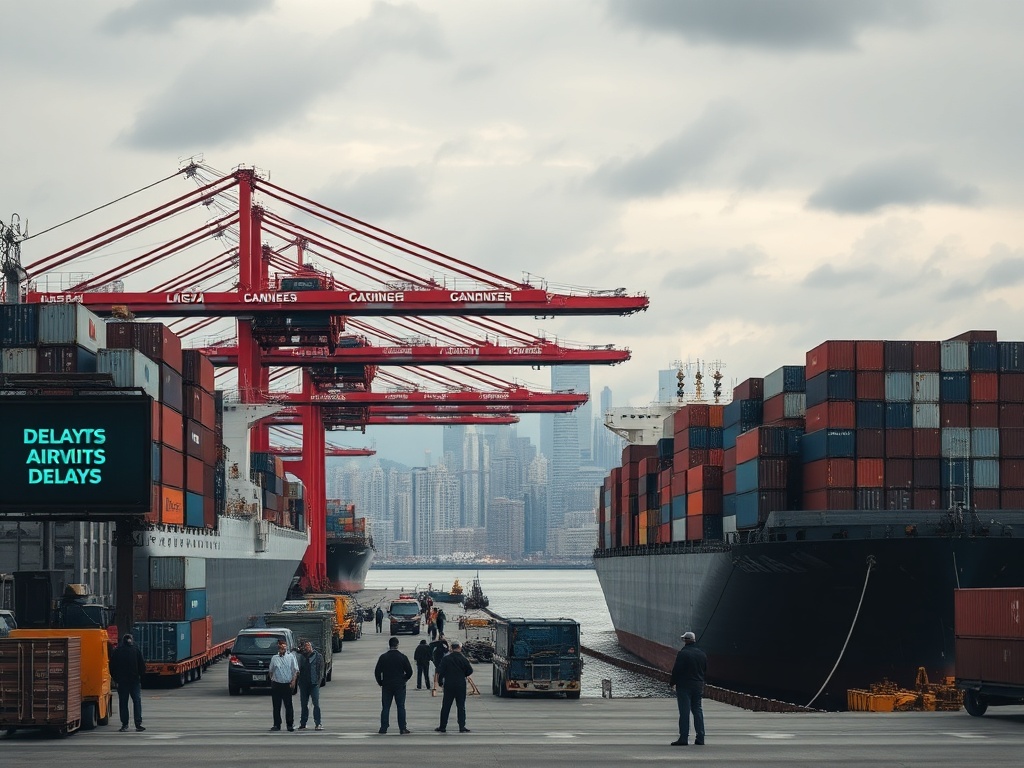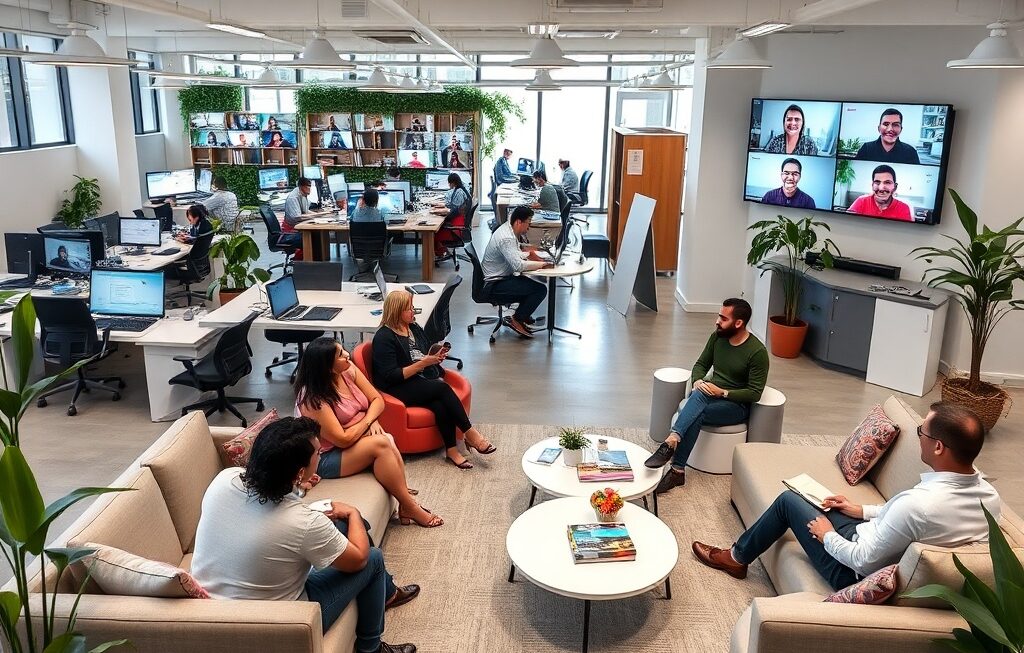In the interconnected world of 2025, global trade serves as the backbone of economic growth, innovation, and international collaboration. Yet, this intricate system remains highly sensitive to geopolitical tensions and conflicts. From border disputes and sanctions to trade wars and political instability, the effects of geopolitical conflicts on global trade have become increasingly profound. As nations pursue competing interests and global alliances shift, businesses and consumers alike face the consequences—ranging from disrupted supply chains to fluctuating commodity prices.
Understanding how geopolitical conflicts affect global trade is essential for companies, investors, and policymakers seeking to navigate an unpredictable world economy. This article explores the complex relationship between politics and commerce, analyzing key examples, consequences, and strategies to mitigate risk in a volatile global environment.
The Connection Between Geopolitics and Global Trade
Geopolitics refers to how geography, politics, and international power dynamics influence global relations. Trade, on the other hand, depends on the free flow of goods, services, and capital across borders. When political or military tensions arise, they can interrupt this flow, leading to economic instability.
In the past decade, the global economy has become more interconnected than ever. However, that interdependence also creates vulnerability. A political decision in one region can trigger ripple effects across global markets within hours. For example, a trade embargo, tariff increase, or resource ban in one country can impact manufacturing, logistics, and consumer prices worldwide.
Recent Geopolitical Conflicts Shaping Global Trade
As of 2025, several ongoing conflicts and geopolitical tensions are influencing the direction of global trade. Each presents unique challenges but also reveals patterns that businesses must learn to anticipate.
- The U.S.–China Trade and Technology Rivalry
The competition between the United States and China remains one of the defining economic stories of the century. Initially centered around tariffs and trade imbalances, the conflict has expanded into technology, cybersecurity, and supply chain control. Restrictions on semiconductors, artificial intelligence, and telecommunications technology have created ripple effects across industries. Many companies now practice “China+1” strategies—diversifying manufacturing operations to countries like Vietnam, India, and Mexico to reduce dependency on a single nation. While this approach enhances resilience, it also increases operational complexity and costs.- The Russia–Ukraine Conflict and Energy Markets
The ongoing war between Russia and Ukraine continues to reshape global energy and agricultural markets. Sanctions imposed on Russia disrupted supplies of oil, natural gas, and fertilizers, causing price spikes and shortages. Europe, once heavily reliant on Russian energy, has accelerated its transition to renewable sources and alternative suppliers. Meanwhile, countries like India and China have deepened trade relations with Russia, highlighting the emergence of parallel trade systems and shifting alliances. These adjustments reflect the broader fragmentation of global trade into regional blocs.- Tensions in the Middle East and Oil Supply Stability
The Middle East remains a geopolitical hotspot due to its strategic importance in global energy supply. Any escalation—whether in Iran, Israel, or the Gulf—tends to send immediate shockwaves through global oil markets. In 2025, rising tensions in the region have once again underscored how energy dependency shapes global trade stability.- Regional Instability in the Asia-Pacific
Territorial disputes in the South China Sea and tensions between China and Taiwan have heightened fears of trade disruption in one of the world’s busiest maritime corridors. The region accounts for over one-third of global shipping, meaning any blockade or military action could cripple international logistics networks.
These examples demonstrate that global trade today operates in a fragile balance. Political and military developments in one area can rapidly influence production, pricing, and investment decisions worldwide.
Economic Consequences of Geopolitical Conflicts
The impact of geopolitical conflicts extends far beyond political headlines. They reshape economies and redefine business strategies on multiple levels.
Supply Chain Disruptions
Global supply chains depend on stability and predictability. When conflicts arise, transportation routes can be blocked, production halted, and materials delayed. For instance, the closure of airspace or ports due to sanctions can force companies to find longer, more expensive routes.
The COVID-19 pandemic already exposed vulnerabilities in supply chains, and geopolitical conflicts have amplified these issues. Businesses are now diversifying suppliers, relocating manufacturing, and investing in digital supply chain management to improve resilience.
Rising Commodity Prices
Wars and sanctions often disrupt the supply of essential commodities like oil, gas, wheat, and metals. When supply tightens, prices rise, fueling inflation globally. For example, the Russia–Ukraine war caused wheat shortages that affected food security in Africa and the Middle East.
Energy markets are particularly sensitive to geopolitical uncertainty. Even the perception of risk can cause oil prices to spike, impacting transportation, production, and consumer goods.
Shifts in Trade Alliances and Economic Blocs
Conflicts often realign global partnerships. Sanctioned countries may seek new alliances, while others strengthen regional cooperation. In 2025, we’re witnessing the rise of regional trade blocs such as the Regional Comprehensive Economic Partnership (RCEP) in Asia and new African trade agreements under the African Continental Free Trade Area (AfCFTA).
This regionalization may reduce global efficiency but increase political and economic self-sufficiency, a trend known as “deglobalization.”
Inflation and Cost of Living Increases
When global trade slows, consumer prices rise. Supply shortages and higher transportation costs contribute directly to inflation. Central banks then respond by raising interest rates, which slows economic growth. The result is a complex cycle that affects both businesses and households.
Decreased Investor Confidence
Uncertainty drives investors to seek safer assets like gold, government bonds, or stable currencies. While this behavior stabilizes some markets, it reduces liquidity in others, leading to stock market volatility. Multinational corporations, in particular, may postpone expansion or mergers until political tensions ease.
Technological Fragmentation
Technology has become another battlefield in geopolitical conflicts. Competing standards for 5G, artificial intelligence, and cybersecurity regulations divide the global market. As a result, companies must adapt products and operations to comply with different regional systems, increasing costs and reducing efficiency.
Corporate Strategies for Navigating Geopolitical Uncertainty
Despite these challenges, businesses are not powerless. By adopting proactive strategies, companies can minimize risks and adapt to new realities.
Diversify Supply Chains
Relying on a single source for materials or manufacturing is risky in today’s environment. Businesses are moving toward multi-country production strategies, often called “nearshoring” or “friendshoring,” where production is shifted closer to home or to politically aligned countries.
This approach enhances stability, even if it increases short-term costs. In the long term, it can protect against disruptions and improve resilience.
Invest in Geopolitical Risk Analysis
Understanding political risks is no longer optional. Many multinational corporations now employ geopolitical analysts or subscribe to risk monitoring services to anticipate potential disruptions. These insights allow companies to adjust sourcing, logistics, and investment strategies before crises escalate.
Strengthen Financial Flexibility
Maintaining liquidity and access to diverse funding sources helps businesses respond quickly to economic shocks. Hedging strategies—such as using currency futures or commodity contracts—can protect against volatility caused by geopolitical events.
Enhance Supply Chain Transparency
Digital technologies like blockchain and AI are improving supply chain visibility. Real-time tracking allows companies to identify risks early and reroute shipments when necessary. In 2025, transparency is a competitive advantage.
Commit to ESG and Sustainability Goals
Environmental, social, and governance (ESG) practices have become more critical in times of geopolitical tension. Companies that maintain ethical sourcing, fair labor, and sustainability commitments often face less reputational risk and maintain stronger consumer trust during crises.
Collaborate Across Borders
Even amid conflict, international cooperation remains vital. Multinational corporations, trade organizations, and governments continue to seek dialogue to prevent disruptions and maintain fair trade practices. Strategic partnerships and public-private collaborations can provide shared resilience against global risks.
Long-Term Outlook for Global Trade
Despite current challenges, global trade is unlikely to collapse. Instead, it is evolving. The future may feature a more fragmented but balanced system where regional trade plays a greater role. Countries and companies that adapt to this new reality will likely thrive.
Technological innovation will also shape the next phase of global trade. Automation, AI, and digital logistics are improving efficiency and reducing dependency on vulnerable trade routes. Moreover, renewable energy and sustainable production models will redefine supply chain structures.
However, the biggest challenge remains predictability. Businesses will need to navigate an era of constant change—where flexibility, agility, and foresight determine success.

In Summary: Geopolitical Conflicts
Geopolitical conflicts will always influence global trade, but they also drive adaptation, innovation, and strategic rethinking. The key for businesses and investors is to remain proactive rather than reactive. By understanding how politics shape markets, diversifying operations, and leveraging technology, global trade participants can mitigate risks and seize new opportunities.
In 2025 and beyond, resilience—not just efficiency—will define successful global trade strategies. The ability to anticipate, adapt, and collaborate across borders will determine which businesses thrive in the face of uncertainty.




